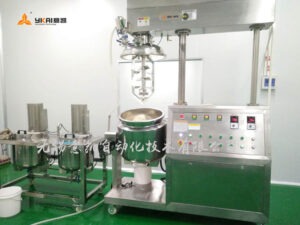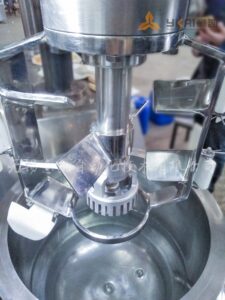In the field of mixing and mixing equipment, there are actually many kinds of materials. Common materials are generally made of stainless steel, as well as glass, enamel and the like. Due to the different properties of the materials, they are also different in terms of use restrictions and maintenance. Whether it is domestic or foreign emulsifier, stainless steel is a mainstream material. And the external structure and internal fittings of the vacuum emulsifier are basically made of stainless steel. Therefore, when talking about the maintenance of the emulsifier, the focus is on the maintenance of the stainless steel material of the equipment. Today, let’s take a look at what should be done when the stainless steel of the vacuum emulsifier is usually maintained during maintenance.
In the manufacture of emulsifier manufacturers, standard food grade 304 stainless steel is generally used. Used in high sanitary requirements, such as the pharmaceutical industry, 316L austenitic stainless steel. Stainless steel mixing tank equipment is generally cleaned after use. Sometimes it is necessary to carry out processes such as pickling, rinsing, and water washing. However, the surface of the stainless steel surface of the cleaned equipment will be more activated, especially in the production of some materials with more corrosive properties. Stainless steel stirred tanks are susceptible to corrosion under such conditions. After cleaning, relevant maintenance work is required to ensure the quality and life of the equipment!
One thing to do after cleaning a stainless steel vacuum emulsifier – requires immediate passivation. This creates a protective film on the stainless steel surface of the device to reduce corrosion and ensure the life of the device. After the surface of the stainless steel metal is treated with an oxidizing medium, the surface of the stainless steel, especially the welded joint portion, will have a significantly lower corrosion rate than before. In general, we use a passivation paste for passivation. Of course, high-quality stainless steel has been passivated at the time of production. However, in order to make the vacuum emulsifier equipment have better equipment conditions and longer service life, we need to maintain the equipment frequently according to the specifications. In the maintenance of the stainless steel vacuum emulsifier, the passivation treatment of the equipment stainless steel is an important maintenance work.








